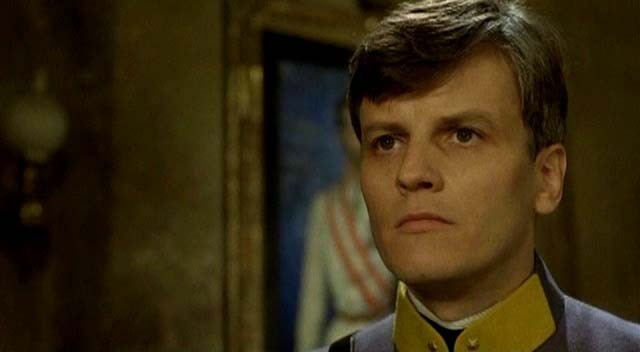7.5/10 (Good)
Valerio Zurlini’s The Desert of the Tartars (1976) is a relatively unknown Italian classic. Zurlini’s other works, most notably Estate Violenta (1959) and Indian Summer (1972), haven’t fared much better. However, as a result of his lack of popularity, the personal joy of “discovering” such a interesting and haunting film becomes all the sweeter.
At first blush, the lack of popularity kind of makes sense — The Desert of the Tartars is ostensibly a war movie but there’s not a single scene of action. Nor do we really ever “see” the “enemy”, if they even exist. Likewise, at a prohibitive length of 140 minutes, few can muster the courage (and attention span) to sit down and watch it (an activity that took multiple sittings/days for me).
At second blush, these (at least mine) preconceptions change (d). That cast is truly astounding. Zurlini gathered some of the best European (mostly French) actors of the day, including Philippe Noiret, Jacques Perrin, Jean – Louis Trintignant, Vittorio Gassman, and even, Max von Sydow. Secondly, film is partially filmed in Iran at the stunningly beautiful locale of Bam fortress (now destroyed by a recent earthquake in Iran). Although most of the actual filming was done in a citadel set constructed near by, the cinematography fully utilizes the haunting vistas of endless desert and crumbling (deserted) buildings seen from the fortress.

the citadel at Bam, Iran
Adapted from Dino Buzzati’s famous novel, The Tartar Steppe, the plot follows the first assignment of a naive young glory seeking lieutenant Drogo (Jacques Perrin) to an isolated fortress on the edges of Empire (Empire in the most universal/archetypal/timeless sense). Here, he meets various other members of the army who have retreated into the daily military regiment and facade (dinners, ceremonies, drills, etc) and developed unusual foibles waiting. Waiting. Waiting. And waiting — for the enemy, whoever they might be, to come. Waiting for an enemy which they have never seen but fear. Fear so intense that the slightest disregard for military procedure results in death. The Colonel, impeccable acted by Vittorio Gassman, a melancholy cloistered man, exudes power from the distances. The doctor (Jean – Louis Trintignant) treats an officer with a mysterious illness perhaps caused by this waiting. Drogo seeks every excuse to leave this citadel of waiting.

And we wait with them. We watch the endless repetition of life. We see their characters develop and age and retreat from the world. Various occurrences take place, a white tartar horse is seen in the distance. A officer discovers lights seen only by a very powerful set of binoculars — months pass, they move no closer, the powerful binoculars are confiscated for fear of unsubstantiated rumors. Our characters grow old. The fortress is slowly abandoned.
Zurlini has creating a haunting gem. The Desert of the Tartars, is a meditation on suppressed emotion, the futility of war, the physiological effects of continuous fear and tension…. However, perhaps intentionally, the audience suffers along on this slow, laborious, endless, repetitive journey. The acting is impeccable, the scenery is stunning, the direction is competent. If a beautiful, meditative, slow movie is right up your ally then this is completely worth a viewing. Zurlini has been ignored for far too long. By far one of the best Italian dramas I’ve seen.


Mm.. sounds very interesting to me, but as you say, it is not a surprise that it didn’t do well. The first version I wrote of one of my books showed much of the waiting game involved in war, and I ended up changing it because of the modern attention span.
Well, it did win a bunch of awards in Italy (best Italian picture, etc…). It just hasn’t kept its initial popularity.
Popularity rarely has anything to do with a film’s (or book’s) merit. Witness the current “Twilight” mania. Thirty seconds of previews on tv was all I needed to convince me I’d rather stick pins in my eyes than sit through any of them.
Yes, but we should make a distinction between general popularity and critical reception. A positive critical reception often has little to do (besides in some circles) with general popularity. The Desert of the Tartars was thus a generally considered a critical success but forgotten by most people — besides obviously film historians and the like.
I agree that popularity and merit do not align… but popularity and profit do…
I would like to see what it’s like to make some money… it would make a nice control on the experiment that is the rest of my life.